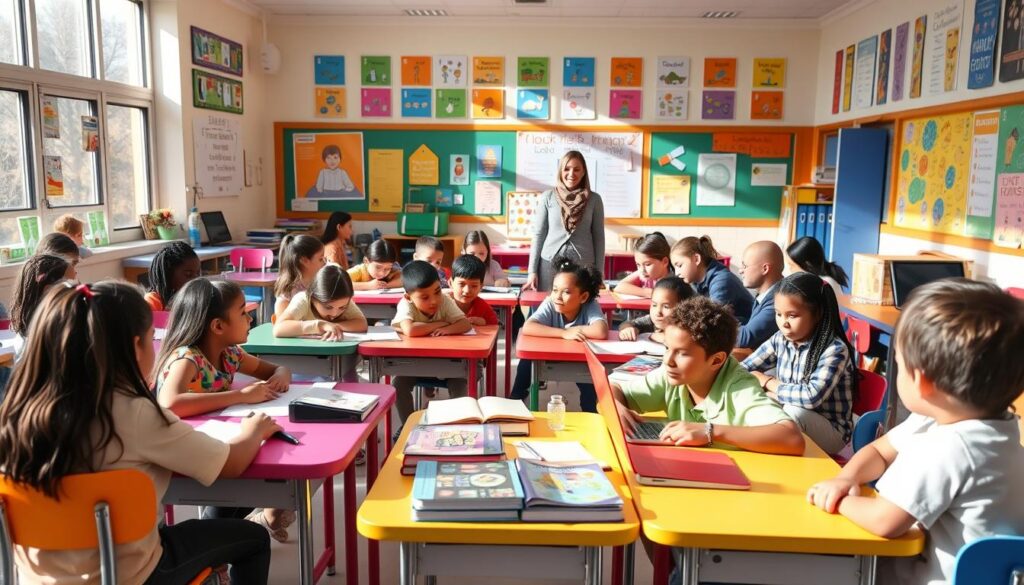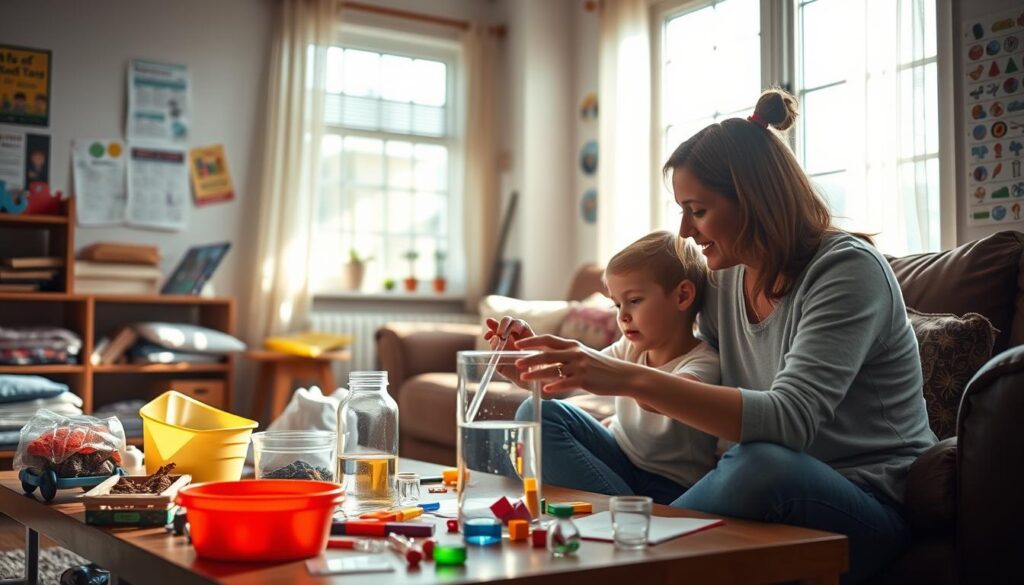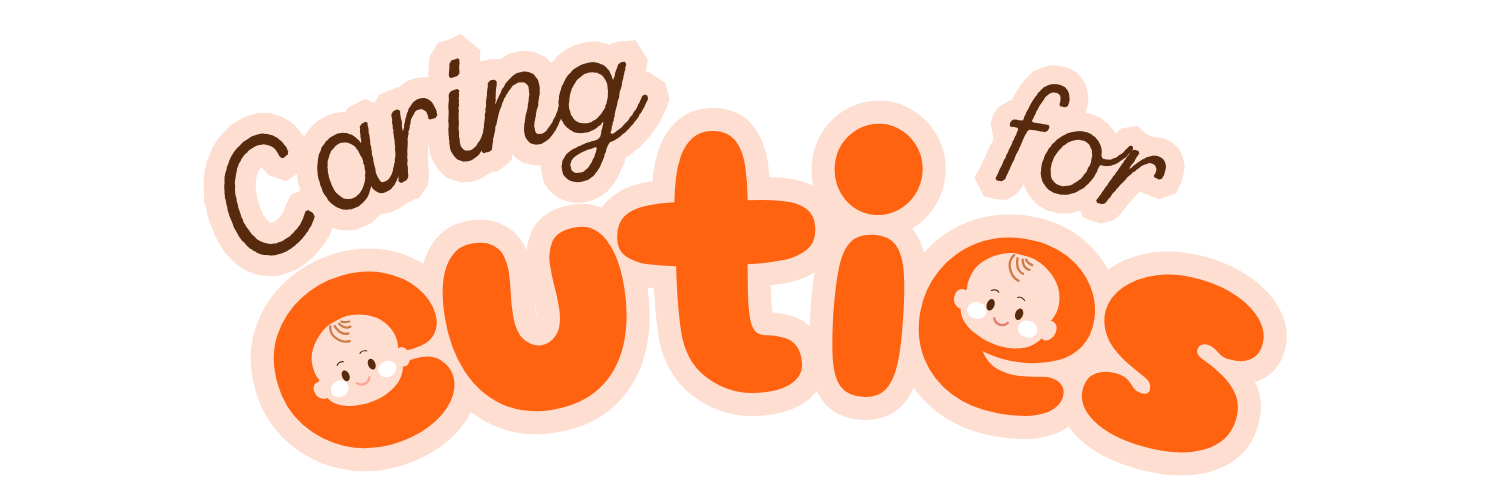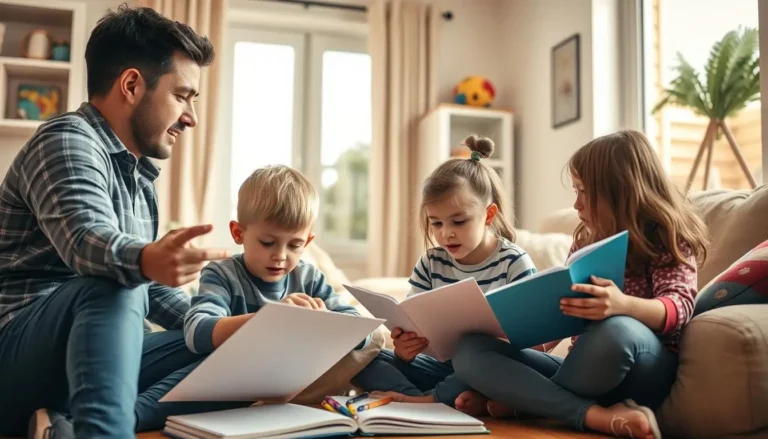Are we doing enough for our kids in school-age education? Students face many challenges and chances in their K-12 years. School education is key to getting them ready for life.
It needs a full plan that covers curriculum, teaching methods, and student growth.

This article looks at school education for kids. It talks about the need for a balanced learning experience. We’ll see how curriculum, teaching, and support help students succeed.
By understanding different learning needs, teachers and parents can help every child reach their best.
Key Takeaways
- Quality education is essential for K-12 students to succeed academically and personally
- Curriculum standards, such as Common Core and STEM, provide a framework for learning
- Effective teaching methods, including differentiated instruction and project-based learning, engage students
- Technology integration enhances the learning experience and prepares students for the digital age
- Supporting students’ social and emotional development is crucial for their overall well-being and success
The Importance of Quality Education for School-Age Children
It’s very important to give quality early education to school-age kids. This helps them grow and do well in the future. It teaches them essential skills, helps them make friends, and boosts their emotional growth.
Good education helps kids think clearly, solve problems, and talk well. These skills help them do well in school and face life’s challenges.
Also, quality education lets kids work together and share ideas. They learn to be kind, work as a team, and lead. These skills are important for life and work.
“Education is the most powerful weapon which you can use to change the world.” – Nelson Mandela
Quality education also helps kids feel good emotionally. Teachers create a safe place where kids learn to know themselves and control their feelings. This helps kids stay mentally healthy and make good friends.
Finally, good education prepares kids for school and life. It gives them knowledge, thinking skills, and a love for learning. This helps them do well in school and find good jobs.
Curriculum and Standards in K-12 Education
The curriculum and standards in K-12 education are key. They shape what students learn and how they grow. These guidelines help students get ready for college and their future jobs.
They focus on important skills like thinking critically, solving problems, being creative, and communicating well. Schools use the Common Core State Standards, STEM education, and arts and humanities to teach these skills.
Common Core State Standards
The Common Core State Standards set clear goals for math and English from kindergarten to 12th grade. They help students think deeply and solve problems. This is important for college and work.
By following these standards, schools make sure students meet high expectations. This prepares them for today’s world.
STEM Education
STEM education is vital in our tech world. It teaches problem-solving, critical thinking, and creativity through projects. Students learn to apply what they know to real life.
Arts and Humanities
The arts and humanities are also key in K-12 education. They help students develop communication skills, creativity, and cultural awareness. By studying literature, history, and the arts, students learn to express themselves and think critically.
| Subject Area | Key Skills Developed |
|---|---|
| Mathematics | Problem-solving, critical thinking, logical reasoning |
| English Language Arts | Communication skills, reading comprehension, writing proficiency |
| Science | Scientific inquiry, data analysis, problem-solving |
| Social Studies | Cultural awareness, historical understanding, civic engagement |
| Arts and Humanities | Creativity, self-expression, critical thinking |
Teaching Methods and Strategies for Effective Learning
Educators are always looking for new ways to engage students and help them learn well. They use many teaching methods and strategies. This makes the classroom a fun and interactive place for all students.
Differentiated Instruction
Differentiated instruction meets each student’s unique needs. It makes sure everyone has a chance to do well. Teachers use different ways to teach, like:
- Varying the complexity of assignments and materials
- Offering choice in learning activities and assessments
- Providing small-group instruction based on skill level or learning style
- Using engaging visuals and manipulatives to support learning
Project-Based Learning
Project-based learning (PBL) makes students solve real-world problems. It helps them think critically, work together, and communicate well. Students learn by doing real projects, like:
- Posing a driving question or challenge
- Facilitating student-driven research and investigation
- Incorporating feedback and revision cycles
- Culminating in a public product or presentation
Technology Integration
Technology integration makes learning more fun and interactive. It uses digital tools to make learning personal and engaging. Some ways to use technology include:
| Tool | Application |
|---|---|
| Interactive whiteboards | Collaborative brainstorming and problem-solving |
| Learning management systems | Organizing and delivering course content |
| Educational apps and games | Reinforcing skills and concepts through interactive practice |
| Virtual and augmented reality | Immersive learning experiences and simulations |
“The illiterate of the 21st century will not be those who cannot read and write, but those who cannot learn, unlearn, and relearn.” – Alvin Toffler
Using differentiated instruction, project-based learning, and technology makes learning fun and effective. It prepares students for the 21st century.
Social and Emotional Learning in Schools
In today’s schools, social and emotional learning (SEL) is key for students. Schools now see the value of teaching social skills, emotional growth, and self-discovery. They want to help students succeed in school and life.
Studies show SEL programs boost grades, reduce bad behavior, and improve happiness. Students learn to work together, understand others, and know themselves better. This helps them face school and life’s challenges.
- Increased social interaction and positive relationships with peers and teachers
- Enhanced emotional regulation and resilience
- Greater self-discovery and personal growth
- Improved problem-solving and decision-making skills
- Stronger sense of community and belonging within the school environment
One way to teach SEL is through teamwork. When students work together, they learn to communicate, cooperate, and solve problems. They find out what they’re good at and what they need to work on.
SEL also means letting students express their feelings and think about themselves. Through writing, art, and talks, they can share their thoughts and feelings. This helps them understand themselves better and deal with their emotions.
“Social and emotional learning is the process through which all young people and adults acquire and apply the knowledge, skills, and attitudes to develop healthy identities, manage emotions and achieve personal and collective goals, feel and show empathy for others, establish and maintain supportive relationships, and make responsible and caring decisions.” – Collaborative for Academic, Social, and Emotional Learning (CASEL)
| SEL Competency | Description |
|---|---|
| Self-Awareness | The ability to understand one’s own emotions, thoughts, and values, and how they influence behavior. |
| Self-Management | The ability to regulate one’s emotions, thoughts, and behaviors effectively in different situations. |
| Social Awareness | The ability to take the perspective of and empathize with others from diverse backgrounds and cultures. |
| Relationship Skills | The ability to establish and maintain healthy and rewarding relationships with diverse individuals and groups. |
| Responsible Decision-Making | The ability to make constructive and respectful choices about personal behavior and social interactions. |
By focusing on SEL, schools can raise students who are smart and emotionally smart. They will be ready for life’s ups and downs. Investing in SEL means investing in our students’ and society’s future.
The Role of Technology in Modern Education
In today’s world, technology is key in education. It includes educational software, apps, and online learning platforms. These tools make learning fun and help students understand complex ideas better.
Educational software and apps are great for K-12 students. They offer personalized learning and feedback right away. Educational software also fits different learning styles, helping every student succeed.
Online Learning Platforms
Online learning platforms have changed how we get school materials. They offer a place for all school stuff, making it easy to stay on top of work. This makes learning flexible and convenient for everyone.
“Technology will never replace great teachers, but technology in the hands of great teachers is transformational.” – George Couros
Digital Literacy Skills
It’s important for students to know how to use technology well. This means they can find, check, and make digital content. Schools teach these skills to get students ready for the digital world.
Schools can use technology in all subjects. This helps students use their skills in many ways. It makes sure everyone can use technology to learn better.
Parental Involvement and Support in School-Age Education
Parents play a big role in helping school-age kids do well in school. When parents get involved, kids do better in school, behave better, and love learning more. Let’s look at some important ways parents can help.
Parent-Teacher Communication
Good communication between parents and teachers is key. It helps parents know how their child is doing and what they need to work on. It also lets parents share what they know about their child’s learning style and interests. Here are some ways to improve communication:
- Attend parent-teacher conferences
- Use digital communication tools like email or messaging apps
- Participate in school events and activities
- Volunteer in the classroom or for school projects
Homework Assistance
Helping with homework is very important. Parents can guide their kids and help them learn better. Here are some tips for helping with homework:
- Create a dedicated homework space with minimal distractions
- Establish a consistent homework routine
- Break tasks into manageable chunks
- Encourage independent problem-solving while offering support when needed

Encouraging a Love for Learning
Parents can help kids love learning by making their home a learning place. Here are some ideas to encourage a love for learning:
| Activity | Description |
|---|---|
| Reading Together | Set aside time for daily reading, discussing books, and visiting the library |
| Educational Outings | Visit museums, science centers, and historical sites to expand knowledge |
| Creative Projects | Engage in art, music, or writing projects that align with your child’s interests |
| Educational Games | Play board games or use educational apps that promote problem-solving and critical thinking |
“The most powerful way to grow a love of learning in a child is to show them that you love learning yourself.” – Tony Wagner
By getting involved in their child’s education, parents can help them succeed in school and beyond. Through parent-teacher communication, homework assistance, and engaging educational programs, parents can make a big difference in their child’s education.
Extracurricular Activities and Enrichment Programs
Extracurricular activities and enrichment programs are key in school-age education. They offer students chances to discover themselves, be creative, and work together. These activities add to what they learn in class, letting them try new things and learn new skills.
Being part of extracurricular activities can really help a student grow. Some common ones include:
- Sports teams and athletic clubs
- Music, drama, and art programs
- Academic competitions and clubs (e.g., debate, robotics, math)
- Community service and volunteering initiatives
Enrichment programs, like summer camps and after-school classes, offer more chances to explore interests. They cover topics like coding, creative writing, and foreign languages. This lets students see what they might want to do later and learn new skills.
“Extracurricular activities and enrichment programs are essential components of a well-rounded education, nurturing creativity, collaboration, and personal growth.”
There are many good things about joining in extracurricular activities and enrichment programs:
| Benefit | Description |
|---|---|
| Self-discovery | Students can explore their passions and uncover hidden talents |
| Skill development | Participants gain new abilities and refine existing ones |
| Teamwork | Collaborative activities foster cooperation and communication skills |
| Confidence-building | Accomplishments in extracurricular settings boost self-esteem |
By joining in extracurricular activities and enrichment programs, students make their school experience better. They also learn important life skills that will help them long after school.
Addressing Learning Gaps and Challenges
In any school, it’s key to meet the different learning needs of students. Some face learning gaps, while others need more help or challenges to grow. Schools must offer various services and programs to help all students succeed.
Special Education Services
Special education is crucial for students with learning disabilities or delays. These services offer tailored support, making learning easier. Teachers work together to create plans that help each student reach their goals.
Remedial Programs
Students who fall behind or have learning gaps can benefit from remedial programs. These programs offer extra help, like small group lessons or tutoring. The goal is to help students learn the basics so they can keep up with their classwork.
Gifted and Talented Education
Gifted and talented students need special support to grow their talents. Programs for them include fast-paced classes and chances for deep research. These programs aim to spark their creativity and love for learning.
By offering a range of services, schools can meet the needs of all students. This helps close learning gaps, supports those who need extra help, and challenges high-achievers. This way, every student can grow and succeed academically.
Preparing Students for Higher Education and Careers
As students move through K-12, it’s key to focus on college readiness and career readiness. Schools help by giving students the skills and knowledge for higher education and careers. They offer special programs to help students move from high school to college or work.
College Readiness Programs
Many schools have programs to get students ready for college. These include:
- Advanced Placement (AP) courses
- Dual enrollment with local colleges
- Workshops on college applications and essays
- Campus visits and college fairs
These programs help students learn college-level work. They also improve study skills and guide through college applications. This can really help students do well in college.
Vocational Training
For students wanting to work in specific trades, vocational training is great. It includes:
- Apprenticeships and internships
- Industry-specific certifications
- Hands-on training with special equipment
Vocational training gives students real-world skills. These skills can lead to jobs in healthcare, manufacturing, and tech.
Life Skills Development
Schools also work on life skills for success. These include:
| Skill | Description |
|---|---|
| Financial Literacy | Managing money, budgeting, and making smart financial choices |
| Communication | Talking and writing well in different situations |
| Collaboration | Working well in teams and building good relationships |
| Critical Thinking | Thinking deeply, solving problems, and making good decisions |
“Education is not preparation for life; education is life itself.” – John Dewey
By focusing on life skills, schools prepare students for life’s challenges. This approach helps students succeed in school, work, and life. K-12 education sets the stage for lifelong success.
The Impact of School Environment on Student Learning
The school environment is key in shaping students’ learning and growth. A positive and supportive setting helps students do well in school, make friends, and grow emotionally.
Studies show that schools with a caring atmosphere help students stay engaged and motivated. When students feel safe and respected, they participate more in class and work better with others.
A good school environment also boosts social skills. Through group projects and activities, students make friends, learn teamwork, and develop leadership skills.
“A positive school climate is the heart of a successful school. It creates an environment where students feel safe, supported, and engaged in their learning.” – Dr. John Hattie, education researcher
Also, a supportive school environment is crucial for students’ emotional health. Schools that focus on mental health help students deal with stress and stay strong.
To make a positive school environment, educators and leaders need to focus on a few key things:
- Creating a culture of respect and inclusivity
- Ensuring a safe and secure physical space
- Offering diverse learning opportunities and support services
- Encouraging open communication and strong relationships among students, teachers, and families
By investing in a supportive school environment, we can help every student reach their full potential. This sets them up for success in school and beyond.
Innovations and Trends in School-Age Education
The world of school education is always changing. New educational innovations are coming out to make learning better. These include personalized learning, gamification, and blended learning. They use technology to make learning fun and interactive.
Personalized Learning
Personalized learning means teaching in a way that fits each student. It uses data and special software to make learning paths for each one. This way, students can learn at their own speed and get help where they need it.
Studies show that personalized learning makes students more engaged and motivated. It also helps them do better in school.
Gamification in Education
Gamification adds game-like elements to learning. It uses things like points and challenges to make learning fun. This approach makes students more active and helps them solve problems better.
“Gamification is not about turning education into a game. It’s about using game mechanics to make learning meaningful.” – Lee Sheldon, Game Designer and Educator
Blended Learning Models
Blended learning mixes classroom teaching with online learning. This way, students can learn at their own pace and do assignments online. Then, in class, they can work together and do projects.
Research shows that blended learning can make students happier and do better in school. It’s a good mix of online and in-person learning.
| Blended Learning Model | Description |
|---|---|
| Rotation Model | Students rotate between online learning and face-to-face instruction on a fixed schedule |
| Flex Model | Students primarily learn online, with teacher support available as needed |
| A La Carte Model | Students take one or more courses entirely online to supplement their traditional classes |
| Enriched Virtual Model | Students divide their time between attending face-to-face sessions and learning remotely online |
By using these educational innovations, schools can make learning more exciting and effective. As technology gets better, teachers need to keep up. This way, students will be ready for the future.
Equity and Inclusion in K-12 Education
Equity and inclusion are key in a top-notch K-12 education system. It’s important that all students get the same chances and resources, no matter their background. This helps ensure everyone can succeed.
Addressing Achievement Gaps
Achievement gaps happen when some students do better than others in school. This can be due to race, ethnicity, money, or disability. Schools need to offer special help and watch how students are doing closely.
They might give extra tutoring or mentoring. This way, all students can keep up and do well.
Culturally Responsive Teaching
Culturally responsive teaching values the different cultures and experiences of students. Teachers use this approach to make learning more interesting and welcoming. They might use books that reflect students’ lives or celebrate cultural events.
This method helps students feel more connected to their studies. It can also boost their grades.
Supporting Diverse Learners
Helping diverse learners means meeting each student’s unique needs. This could mean using special technology or changing assignments for students with disabilities. It’s also about making the classroom a place where everyone feels valued and respected.
By offering the right support and creating a welcoming space, schools can help all students do well, no matter their background or needs.
FAQ
What is the importance of quality education for school-age children?
Quality education is key for kids in school. It helps them learn important skills and grow emotionally. It also prepares them for future success.
What are the Common Core State Standards in K-12 education?
The Common Core State Standards set goals for what students should know in math and English. They help students get ready for college and careers.
How does differentiated instruction support effective learning in the classroom?
Differentiated instruction meets students where they are. It makes learning fit each student’s needs. This way, everyone can learn and grow.
What role does technology play in modern education?
Technology is a big part of learning today. It offers tools and resources to make teaching better. It helps students learn in fun and interactive ways.
How can parents support their child’s education at home?
Parents play a big role in helping kids learn. They can talk to teachers, help with homework, and make a good learning space at home. They can also spark a love for learning.
What are the benefits of extracurricular activities and enrichment programs?
Activities outside of class are great for kids. They help kids discover themselves, work together, and learn new things. They make learning more fun and help kids grow.
How can schools address learning gaps and challenges faced by students?
Schools can help students who are struggling. They offer special help for those who need it. This includes programs for students who are ahead or behind. Helping each student is important for their success.
What are some innovative trends in school-age education?
New trends in education include learning that fits each student and making learning fun. There are also online and classroom learning mixes. These changes help students learn in ways that work best for them.





